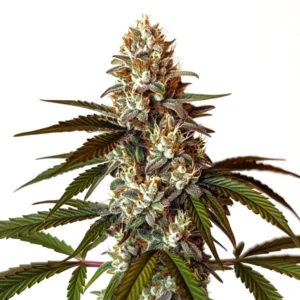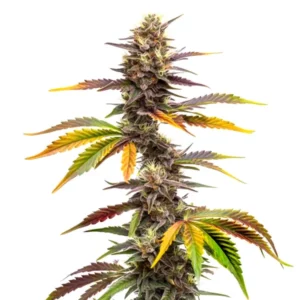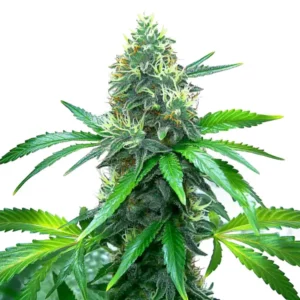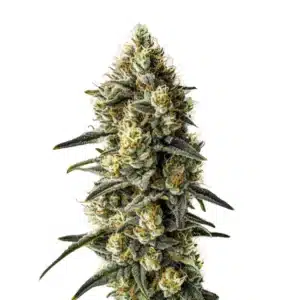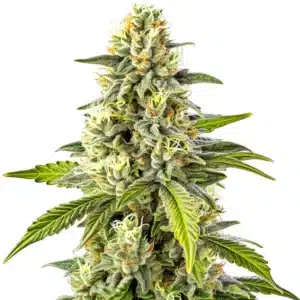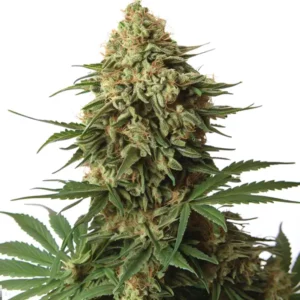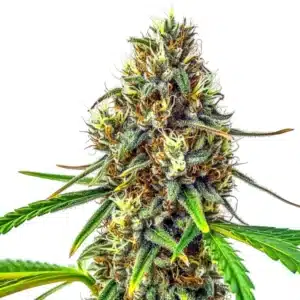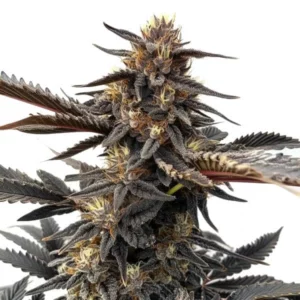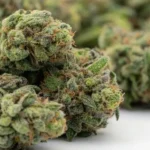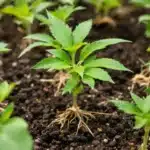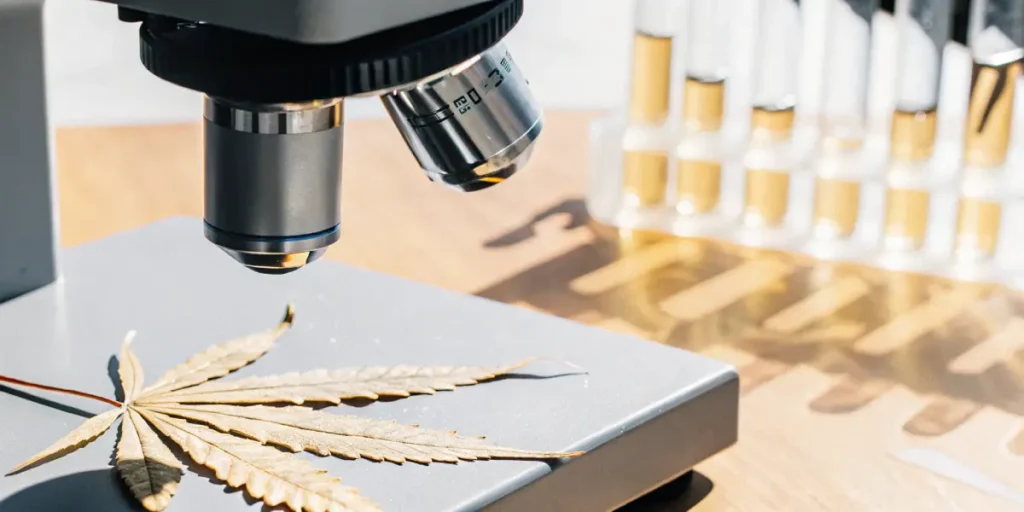
Knowing Free Radicals in Weed Plants
Understanding free radicals in weed plants is essential for healthy cannabis cultivation. Free radicals are unstable molecules that have an unpaired electron, making them highly reactive. In cannabis cultivation, these molecules can damage cells, leading to impaired growth and reduced yields. This cellular damage results in what is known as oxidative stress.
Oxidative stress happens when there’s an imbalance between free radicals and antioxidants in your marijuana plants. Antioxidants are like the peacekeepers. They neutralize free radicals, helping maintain plant health. When out of balance, oxidative stress can harm plants, affecting their ability to thrive.
Recommended Strains
Gelato
|
|
THC | 27% (High) |
|
|
Type | Feminized |
|
|
Yield | High |
|
|
Phenotype | 50% Indica / 50% Sativa |
Blue Dream
|
|
THC | 17% - 24% (Medium) |
|
|
Type | Feminized |
|
|
Yield | High |
|
|
Phenotype | 50% Indica / 50% Sativa |
Every cannabis grower should pay close attention to these factors. By managing oxidative stress in cannabis cultivation, you can ensure your plants reach their full potential. Whether you’re growing indoors or outdoors, knowing free radicals in weed plants is crucial for a successful harvest.
Impact of Free Radicals on Cannabis Growth
The impact of free radicals on cannabis growth is significant. When these unstable molecules invade plant cells, they damage cellular components like DNA, proteins, and lipids. This damage can lead to stunted growth, yellowing of leaves, and even plant death if not managed properly.
Free radicals can also interfere with photosynthesis, the process by which plants convert light into energy. When photosynthesis is disrupted, plants can’t produce the energy they need to grow strong and healthy. This can result in weaker plants and lower yields, which is a real concern for those growing cannabis for commercial purposes or personal use.
Besides, knowing free radicals in weed plants is essential for identifying environmental stressors that exacerbate their effects. Factors such as drought, nutrient deficiencies, and pest infestations can increase the vulnerability of cannabis plants to free radical damage. By recognizing these threats early, growers can take preventive measures to protect their crops.
Furthermore, the continuous study of the impact of free radicals on cannabis growth can lead to innovative cultivation techniques. Researchers are exploring genetic modifications and breeding strategies to develop strains with enhanced resistance to oxidative stress, promising a more sustainable future for cannabis production.
How Free Radicals Affect Marijuana Plants
Knowing how free radicals affect marijuana plants involves looking at the signs of stress they cause. You might notice your plants developing spots, curling leaves, or a general lack of vitality. These are indicators that free radicals are at work, causing oxidative stress.
For instance, if you’re growing a strain like Blue Dream from Blimburn Seeds, you’ll want to keep an eye out for these signs. Blue Dream is popular for its robustness, but even the hardiest strains can fall victim to oxidative stress if free radicals aren’t managed well.
Recognizing how free radicals affect marijuana plants is crucial for implementing timely interventions. Employing foliar sprays enriched with antioxidants can provide immediate relief to affected plants, reducing the oxidative damage and promoting recovery.
Moreover, knowing the function of environmental control in managing oxidative stress in cannabis cultivation is vital. Adjustments in light exposure, humidity, and temperature can mitigate stressors that lead to an increase in free radical activity, ensuring healthier plants.
Promos & Deals
Managing Oxidative Stress in Cannabis Cultivation
Managing oxidative stress in cannabis cultivation is about creating a balanced environment. This includes providing adequate nutrients, maintaining optimal temperature and humidity, and ensuring your plants receive the right amount of light.
Growing strains like Gelato from Blimburn Seeds can benefit from a controlled environment. Gelato is known for its vibrant growth and flavor, but it requires careful management to prevent oxidative stress. By maintaining balance, you help your plants fend off free radicals naturally.
The management of oxidative stress in cannabis cultivation also involves the strategic use of supplements. Products containing beneficial microorganisms and enzymes can enhance the plant’s natural defense mechanisms, providing an additional layer of protection against free radicals.
Furthermore, regular soil testing and nutrient monitoring are essential components of managing oxidative stress. By ensuring that soil conditions are optimal for growth, growers can minimize the chances of stress-related free radical production, leading to healthier and more resilient plants.
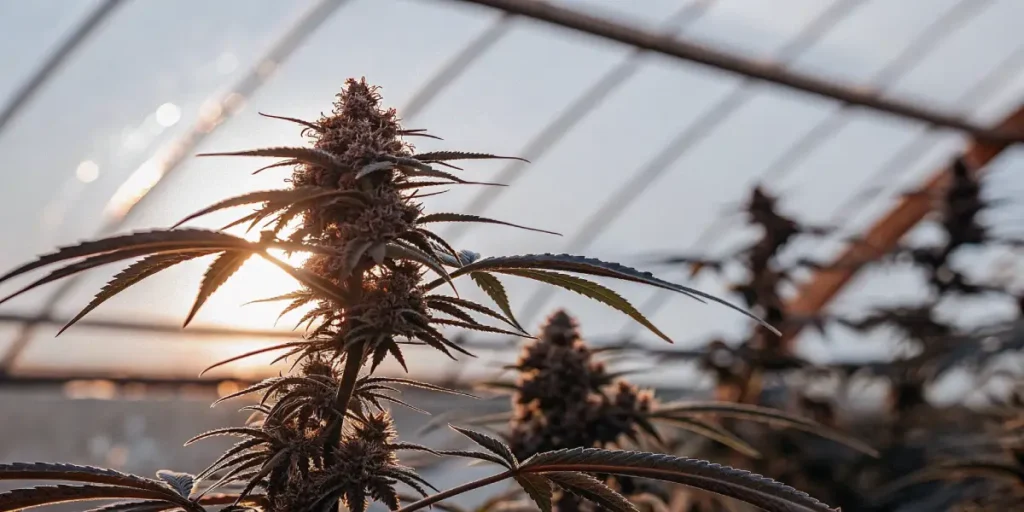
Role of Antioxidants in Weed Plant Health
Antioxidants play a crucial role in weed plant health by neutralizing free radicals. They donate an electron to free radicals, stabilizing them and preventing further cellular damage. This is essential for maintaining plant vitality and promoting healthy growth.
Natural sources of antioxidants for cannabis plants include certain fertilizers and organic matter. By incorporating these into your growing regimen, you can boost your plants’ defenses against oxidative stress. This is especially helpful for strains that are known to be sensitive, like Girl Scout Cookies from Blimburn Seeds.
Additionally, understanding free radicals in weed plants involves recognizing the importance of a balanced diet for your crops. Incorporating a variety of antioxidant-rich supplements can optimize plant health and yield, providing a multifaceted approach to combating oxidative stress.
Moreover, the function of antioxidants in weed plant health extends to enhancing flavor profiles and cannabinoid content. By maintaining cellular integrity, antioxidants contribute to the overall quality and potency of the harvested buds, making them an essential component of successful cannabis cultivation.
Preventing Free Radical Damage in Marijuana Crops
Preventing free radical damage in marijuana crops involves proactive measures. Start by ensuring proper ventilation to reduce stress from heat and humidity. This can help minimize the conditions that lead to free radical formation.
Also, consider using mulches or cover crops to protect your plants from environmental stressors. This can reduce the exposure to pollutants and UV radiation, both of which can increase free radical production. It’s all about creating a safe space for your plants to flourish.
In the quest to prevent free radical damage in marijuana crops, integrating technology into cultivation practices can be highly effective. Automated systems for monitoring and adjusting environmental conditions can provide real-time data, allowing for quick responses to potential stressors.
Moreover, understanding free radicals in weed plants and their prevention is crucial for long-term sustainability. By adopting eco-friendly practices and reducing the use of harmful chemicals, growers can create a more resilient cultivation environment, safeguarding their crops against oxidative stress.
Practical Tips for Growers
- Monitor environmental conditions regularly.
- Use organic fertilizers rich in antioxidants.
- Ensure proper air circulation in your grow area.
- Choose resilient strains like Blue Dream or Gelato.
- Regularly inspect plants for signs of stress.
By implementing these tips, you can effectively manage the impact of free radicals on cannabis growth. Remember, the health of your plants is in your hands, and small changes can make a big difference.
Besides to the outlined tips, engaging in continuous education on the latest research and developments concerning free radicals can further empower growers. Keeping abreast of new techniques and products designed to combat oxidative stress can enhance crop resilience and productivity.
Ultimately, the journey of understanding free radicals in weed plants involves constant learning and adaptation. By fostering a proactive approach and utilizing available resources, growers can ensure a thriving and bountiful cannabis garden.

FAQs
What are free radicals and how do they impact cannabis plants?
Free radicals are unstable molecules that can cause significant damage to cannabis plants. These molecules have an unpaired electron, making them highly reactive. They can harm cellular components such as DNA and proteins, leading to impaired growth and reduced yields.
In cannabis plants, free radicals can disrupt photosynthesis, reducing the energy available for growth. This can result in weaker plants and lower yields. By understanding free radicals in weed plants, growers can take steps to minimize their impact and protect their crops.
Furthermore, the impact of free radicals on cannabis growth is multifaceted, influencing not only the physical health of the plant but also its biochemical processes. The presence of free radicals can alter metabolic pathways, affecting the synthesis of vital compounds such as cannabinoids and terpenes.
Recognizing how free radicals impact cannabis plants also involves considering their effects on plant immunity. Stressed plants are more susceptible to diseases and pest infestations, highlighting the importance of managing oxidative stress to bolster overall plant resilience.
How can I manage oxidative stress in my cannabis plants?
Managing oxidative stress involves creating an optimal growing environment. This includes controlling temperature, humidity, and light exposure. Providing your plants with adequate nutrients and antioxidants can also help neutralize free radicals and reduce oxidative stress.
Choosing resilient strains like Gelato and Blue Dream can make management easier. These strains are known for their robustness and ability to thrive under various conditions, making them ideal for growers looking to minimize stress.
Additionally, managing oxidative stress in cannabis cultivation requires a holistic approach that considers all aspects of plant care. Regular pruning and trimming can improve air circulation and reduce the likelihood of microclimates that foster oxidative stress.
Another effective strategy is the incorporation of companion plants that naturally deter pests and provide additional shade, creating a symbiotic environment that reduces stressors and supports healthy growth.
What role do antioxidants play in cannabis plant health?
Antioxidants are crucial for maintaining cannabis plant health. They neutralize free radicals by donating an electron, stabilizing these reactive molecules and preventing cellular damage. This helps promote healthy growth and vitality in your plants.
Incorporating natural sources of antioxidants, such as organic fertilizers, into your growing regimen can boost your plants’ defenses. This can make a significant difference in preventing free radical damage and ensuring a successful harvest.
The function of antioxidants in weed plant health extends beyond mere protection. By enhancing the plant’s stress tolerance, antioxidants can improve growth rates and yield quality, ensuring a more abundant and potent harvest.
Moreover, understanding free radicals in weed plants and the protective role of antioxidants can guide growers in selecting the best supplements and practices to incorporate into their cultivation strategies, maximizing plant health and productivity.
Can environmental factors increase free radical production?
Yes, environmental factors such as excessive light, heat, and pollution can increase free radical production in cannabis plants. These conditions can cause stress, leading to an overproduction of free radicals and subsequent cellular damage.
To prevent this, growers should monitor and control environmental conditions closely. Ensuring proper ventilation, using mulches, and choosing appropriate growing locations can help reduce the risk of free radical formation.
Furthermore, understanding how free radicals affect marijuana plants involves recognizing that even subtle changes in environmental conditions can have a profound impact. Small temperature fluctuations or light inconsistencies can trigger stress responses that elevate free radical levels.
Implementing a comprehensive environmental management plan, including the use of shade cloths or reflective materials, can mitigate these risks, providing a stable and supportive growth environment for cannabis plants.
Are certain cannabis strains more resistant to free radicals?
Some cannabis strains are naturally more resistant to free radicals due to their genetic makeup. Strains like Blue Dream and Girl Scout Cookies are known for their resilience and ability to withstand various stressors, making them suitable for growers concerned about free radical damage.
Choosing the right strain can make managing oxidative stress more manageable. It’s important to consider the specific needs and characteristics of each strain when planning your cultivation strategy.
Besides to selecting resilient strains, understanding free radicals in weed plants can guide growers in breeding practices aimed at enhancing stress resistance. Crossbreeding with naturally robust strains can produce new varieties with improved tolerance to oxidative stress.
Moreover, the development of strain-specific cultivation techniques can further optimize growth conditions, ensuring that each plant receives the tailored care it needs to thrive despite the presence of free radicals.




